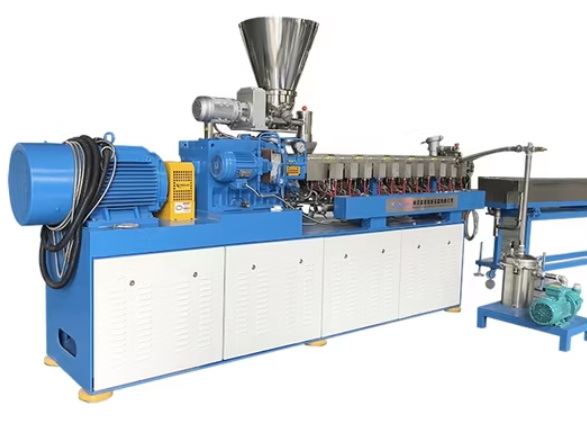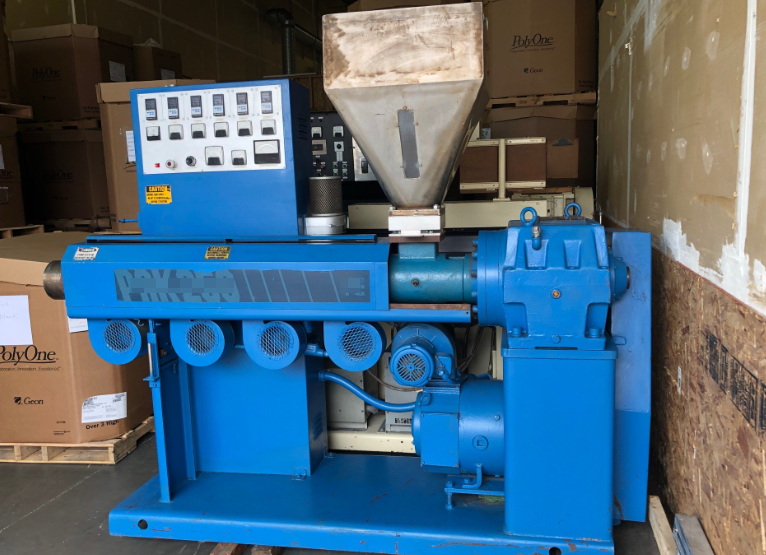Content Menu
● Introduction to Compounding and Reclaim Extrusion
>> Compounding Extrusion
>> Reclaim Extrusion
● Ensuring Quality of Used Compounding and Reclaim Extrusion Equipment
>> 1. Inspection and Testing
>> 2. Maintenance and Repair
>> 3. Optimization of Process Parameters
>> 4. Material Selection and Preparation
>> 5. Quality Control and Testing
● Additional Considerations for Used Equipment
>> Integration with Existing Systems
>> Training and Support
>> Regulatory Compliance
>> Sustainability and Environmental Impact
● Conclusion
● FAQ
>> 1. What are the key factors to consider when purchasing used compounding extrusion equipment?
>> 2. How does maintenance impact the quality of used reclaim extrusion equipment?
>> 3. What role does material preparation play in ensuring the quality of extruded products?
>> 4. How can process parameters be optimized for better product quality?
>> 5. What are some common quality control measures in extrusion processes?
Ensuring the quality of used compounding and reclaim extrusion equipment is crucial for maintaining efficiency, reducing costs, and producing high-quality products. This involves a comprehensive approach that includes inspection, maintenance, and optimization of the equipment. In this article, we will explore the key steps and considerations for ensuring the quality of used compounding and reclaim extrusion equipment.

Introduction to Compounding and Reclaim Extrusion
Compounding and reclaim extrusion are essential processes in the plastics industry, involving the mixing of polymers with additives and fillers to create specific properties, and the recycling of plastic materials to reduce waste and costs. Used equipment can be a cost-effective option for many manufacturers, but it requires careful evaluation to ensure it meets operational standards.
Compounding Extrusion
Compounding extrusion involves the use of extruders, typically twin-screw, to mix polymers with various additives and fillers. This process is critical for creating materials with specific properties such as strength, color, or thermal resistance. Twin-screw extruders are preferred for compounding due to their superior mixing capabilities and flexibility in handling complex formulations. They can be used for a wide range of applications, from medical devices to automotive parts.
Twin-screw extruders offer several advantages over single-screw extruders, including better heat transfer, improved mixing efficiency, and the ability to handle a broader range of materials. However, they are generally more complex and require more maintenance than single-screw models.
Reclaim Extrusion
Reclaim extrusion focuses on recycling plastic materials, often using single-screw or twin-screw extruders to process post-industrial or post-consumer waste. This process helps reduce environmental impact and can produce materials that are comparable to virgin plastics. Ram stuffer extruders are particularly useful for processing low-bulk-density materials like film waste. They use a pneumatic ram to force material into the extruder, ensuring efficient feeding and minimizing clogging.
Reclaim extrusion is becoming increasingly important as companies seek to reduce their environmental footprint and comply with recycling regulations. By integrating reclaim extrusion into their production lines, manufacturers can reduce waste disposal costs and create new revenue streams from recycled materials.
Ensuring Quality of Used Compounding and Reclaim Extrusion Equipment
1. Inspection and Testing
Before purchasing used equipment, it is essential to conduct a thorough inspection. This includes checking for wear on critical components like screws, barrels, and dies, as well as evaluating the condition of electrical and control systems. A detailed inspection report should highlight any necessary repairs or replacements to ensure the equipment operates efficiently and safely.
Inspection should also involve testing the equipment under operational conditions to identify any performance issues. This might include running trial batches of material to assess output quality and consistency.
2. Maintenance and Repair
Regular maintenance is crucial for extending the lifespan of used equipment. This includes cleaning, lubricating moving parts, and replacing worn components. Predictive maintenance technologies can help identify potential issues before they cause downtime, allowing for proactive repairs and minimizing production interruptions.
Maintenance schedules should be tailored to the specific needs of the equipment, taking into account factors like usage frequency and material types processed. Regular cleaning of the extruder barrel and screws is particularly important to prevent material buildup and contamination.
3. Optimization of Process Parameters
Optimizing process parameters such as temperature, pressure, and screw speed is vital for achieving consistent product quality. Advanced control systems can automate these adjustments, ensuring that the extrusion process operates within optimal ranges. For example, in HDPE extrusion, temperatures typically range from 180°C to 220°C, and maintaining precise control is critical for preventing material degradation and ensuring uniform melting.
Process optimization also involves understanding the material properties and how they interact with the extrusion process. This knowledge helps in selecting the right materials and additives to achieve desired product characteristics.
4. Material Selection and Preparation
Choosing the right materials and preparing them properly is essential for efficient extrusion. This includes using high-quality polymers and additives, as well as ensuring that regrind materials are properly classified and stored. Proper management of regrind materials involves classifying, storing, and incorporating them into production efficiently. This helps minimize waste and maintain product consistency.
Material selection should be based on the intended application of the final product. For instance, materials used in medical devices require strict purity and biocompatibility standards, while those for automotive parts may prioritize strength and durability.
5. Quality Control and Testing
Implementing rigorous quality control measures ensures that the final products meet specifications. This includes testing for dimensional accuracy, surface finish, and mechanical properties. Advanced technologies like visual inspection systems and ultrasonic testing allow for real-time monitoring and adjustment during the extrusion process, reducing waste and improving efficiency.
In-line quality inspection systems can detect defects early in the production process, enabling immediate corrections and minimizing the need for costly rework or scrap.

Additional Considerations for Used Equipment
Integration with Existing Systems
When integrating used compounding and reclaim extrusion equipment into an existing production line, compatibility with current systems is crucial. This includes ensuring that the equipment can communicate effectively with other machinery and control systems, and that it aligns with existing workflows and safety protocols.
Training and Support
Providing adequate training to operators on the use and maintenance of used equipment is essential. This ensures that they understand how to optimize performance, troubleshoot issues, and perform routine maintenance tasks effectively. Additionally, having access to technical support from the supplier or manufacturer can be invaluable in addressing any operational challenges that arise.
Regulatory Compliance
Manufacturers must ensure that their used compounding and reclaim extrusion equipment complies with relevant industry regulations and standards. This includes meeting safety standards for operation and ensuring that products produced meet quality and environmental regulations.
Sustainability and Environmental Impact
Reclaim extrusion, in particular, offers significant environmental benefits by reducing plastic waste and conserving resources. Manufacturers should consider the sustainability of their operations and how used equipment can contribute to these goals. This might involve assessing the energy efficiency of the equipment and its ability to process recycled materials effectively.
Conclusion
Ensuring the quality of used compounding and reclaim extrusion equipment requires a comprehensive approach that includes thorough inspection, regular maintenance, optimization of process parameters, proper material selection, and rigorous quality control. By following these steps, manufacturers can maximize the efficiency and lifespan of their equipment, reduce costs, and produce high-quality products.

FAQ
1. What are the key factors to consider when purchasing used compounding extrusion equipment?
When purchasing used compounding extrusion equipment, consider factors such as the condition of the screws, barrels, and dies, the type of materials it can process, and its compatibility with your existing production setup.
2. How does maintenance impact the quality of used reclaim extrusion equipment?
Regular maintenance is crucial for maintaining the quality of used reclaim extrusion equipment. It helps prevent wear on critical components, reduces downtime, and ensures consistent product quality.
3. What role does material preparation play in ensuring the quality of extruded products?
Proper material preparation is essential for ensuring the quality of extruded products. This includes using high-quality polymers and additives, and ensuring that regrind materials are properly classified and stored.
4. How can process parameters be optimized for better product quality?
Process parameters such as temperature, pressure, and screw speed can be optimized using advanced control systems. These systems automate adjustments to ensure the extrusion process operates within optimal ranges.
5. What are some common quality control measures in extrusion processes?
Common quality control measures include testing for dimensional accuracy, surface finish, and mechanical properties. In-line inspection methods like visual systems and ultrasonic testing are also used for real-time monitoring.






















